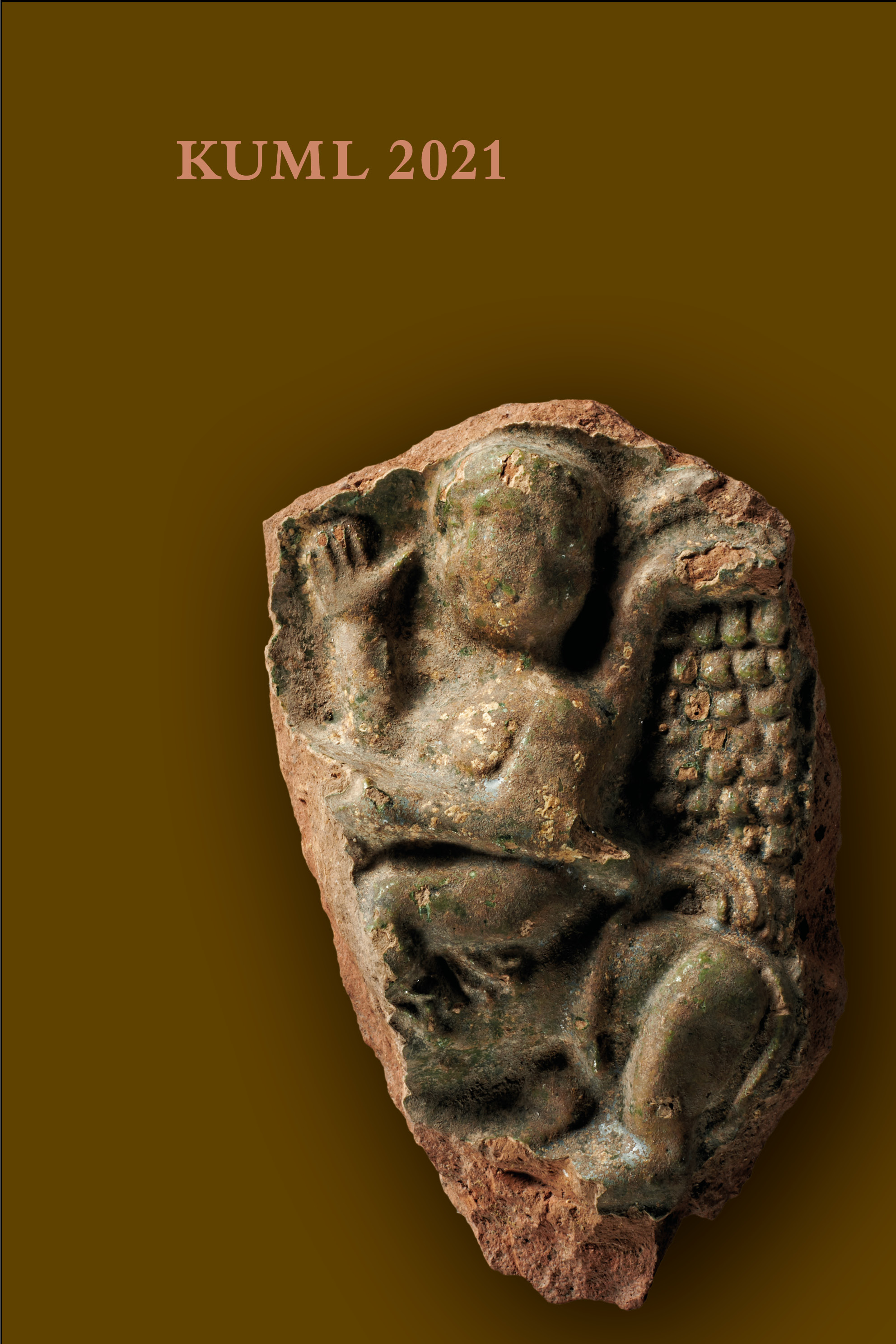Voldstedet Sallingholm
Proces, resultater og metodiske overvejelser
DOI:
https://doi.org/10.7146/kuml.v70i70.134638Nøgleord:
voldsted, SallingholmResumé
The Sallingholm castle mound – process, results and methodological considerations
The investigations at Sallingholm castle mound were carried out as part of a study of four test localities in a pilot project called Middelalderborge i Region Midtjylland (Medieval Castles in Central Denmark Region). A joint project established for the region’s archaeologists, carried out in 2014-15.
Prior to the archaeological survey executed in 2014, the Sallingholm castle mound lay relatively unnoticed in the Hinnerup river valley. Its banks were barely noticeable under the meadow vegetation, especially when compared with the impressive Skansehøj castle mound just 200 m to the east of Sallingholm, with its steep banks towering above the edge of the river valley. A causeway provided the only access to Sallingholm, and Skansehøj is located precisely at the point where the road from the castle mound meets the mainland.
There has been speculation over time as to the connection, if any, there may have been between the two strongholds. In the study of Sallingholm, several aspects were clarified that have a bearing on an interpretation of the relationship between Sallingholm and Skansehøj.
Sallingholm turned out to be a much larger structure than foreseen. In earlier submissions, the structure was recorded as consisting of two oval banks, together with a causeway. The project’s initial field survey, followed up by archaeological excavations, revealed that it consists of four discrete man-made turf banks and was extraordinarily well-constructed.
Given its position, Skansehøj was able to control access to Sallingholm, the castle mound in the meadow, and Sallingholm’s interpretation as a refuge seems obvious. The locality was not excavated in its entirety, and it is possible that the picture that emerged, based on a relatively small number of finds and a limited occurrence of accumulated waste layers, is not fully comprehensive. The information currently available forms the basis for an interpretation of Sallingholm as a stronghold that was not in continuous use and perhaps only occupied quite briefly: This concurs with the theory that Skansehøj was built for a siege.
One aim of the study was to obtain an accurate date for Sallingholm using dendrochronology. To this end, samples of well-documented, dateable wood were collected for analysis. Of these, ten samples produced reasonably reliable dates and one was particularly precise, specifying a felling date in the spring of 1372. The remaining dates were less precise and fell into two groups: One group dated remains associated with the construction of one of the banks to about 1372, the other group, comprised of samples from a presumed timber road by another bank, gave a date approximately 20 years later.
A precise date for activities at the stronghold focussed the search for relevant historical sources. The date in the spring of 1372 proved to be particularly interesting in relation to the siege/refuge hypothesis: 1372 was the year when King Valdemar IV Atterdag concluded peace with the coalition of the southern counts who had ruled the kingdom since 1368. Not everyone wanted to surrender to Valdemar voluntarily, and some of the Jutland nobility, in particular, had to be persuaded by force and siege.
The results presented here suggest that the owner of Sallingholm was one of the rebellious Jutland nobles who, in 1372, needed to defend themselves against the Danish king.
With this study, Sallingholm, a previously unknown castle mound, has become part of Danish history.
Downloads
Publiceret
Citation/Eksport
Nummer
Sektion
Licens
Fra og med årgang 2022 er artikler udgivet i Kuml med en licens fra Creative Commons (CC BY-NC-SA 4.0).
Alle tidligere årgange af tidsskriftet er ikke udgivet med en licens fra Creative Commons.


